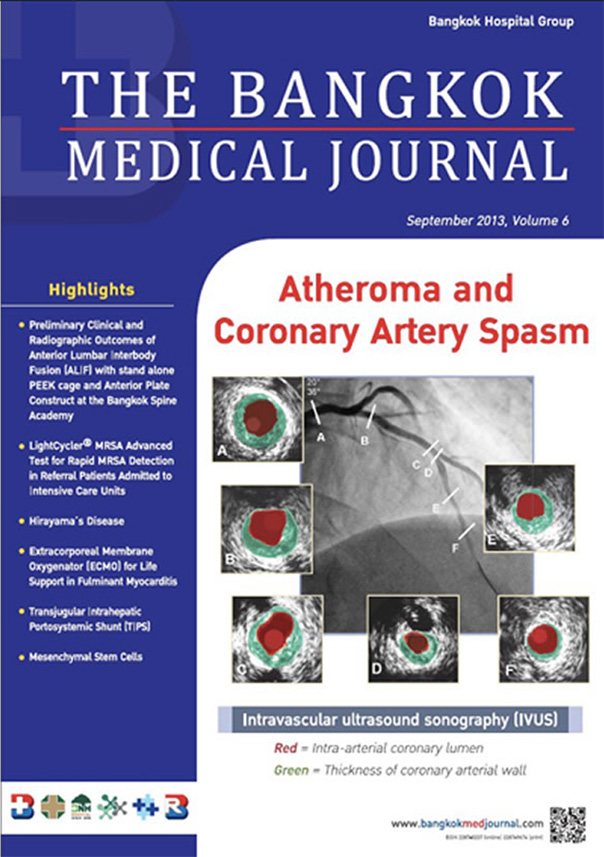Demonstration of a Complete Tear of the Pancreatic Duct by Magnetic Resonance Cholangiopancreatography (MRCP)
Main Article Content
Abstract
A 31-year-old man was involved in a motorcycle accident whilst riding and sustained a blunt abdominal injury. He was treated conservatively at a local hospital for 5 days before transferring to the Bangkok Hospital.
Article Details
How to Cite
1.
Nitibhon A, Muangman P, Suchato C, Varatorn R. Demonstration of a Complete Tear of the Pancreatic Duct by Magnetic Resonance Cholangiopancreatography (MRCP). BKK Med J [internet]. 2013 Sep. 20 [cited 2025 Dec. 26];6(1):103. available from: https://he02.tci-thaijo.org/index.php/bkkmedj/article/view/218649
Issue
Section
Medical Images
This is an open access article distributed under the terms of the Creative Commons Attribution Licence, which permits unrestricted use, distribution, and reproduction in any medium, provided the original work is properly cited.
References
1. Vaishnav KU, Soni HC, Pandhi S, et al. Traumatic Rupture of Pancreas. The Internet Journal of Radiology 2010. (Accessed April 10, 2013 at http://archive.ispub.com/ journal/the-internet-journal-of-radiology/volume-12-number-1/traumatic-ruptureof- pancreas-1.html#sthash.z38fIMXv.dpuf)
2. Suchato C, Varatorn R. Non-conspicuity of biliary tract by Magnetic Resonance Cholangiopancreatography (MRCP) in hemobilia post sphincterotomy. Bangkok Med J 2013;5:36-8.
2. Suchato C, Varatorn R. Non-conspicuity of biliary tract by Magnetic Resonance Cholangiopancreatography (MRCP) in hemobilia post sphincterotomy. Bangkok Med J 2013;5:36-8.


